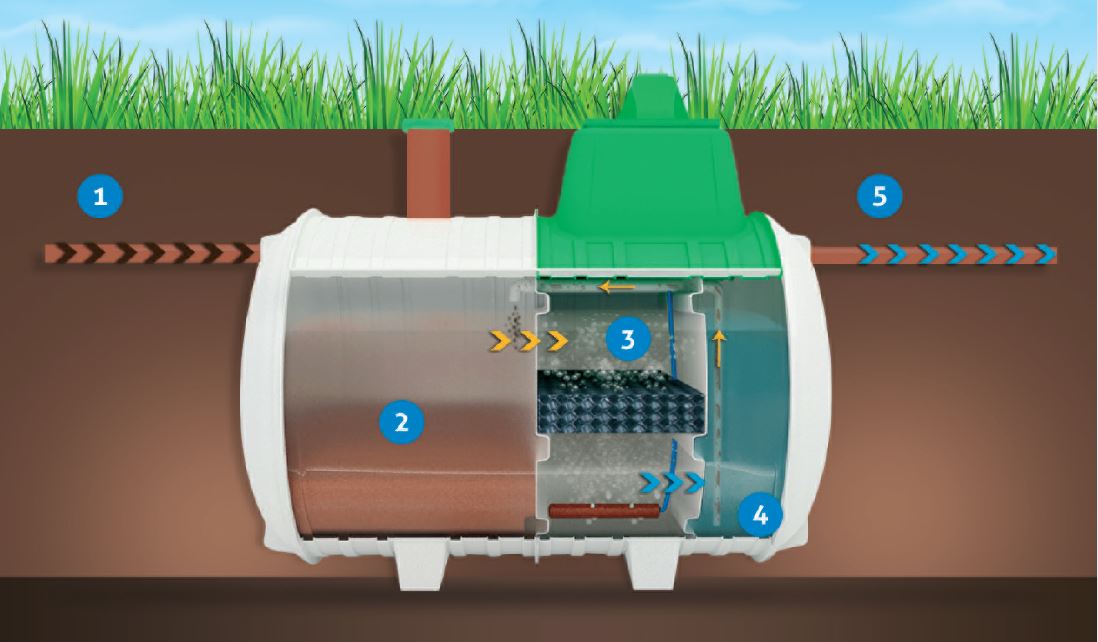
Why would I build the local sewage treatment plant?
Have you ever asked yourself why I installed a local sewage treatment plant in my house? What is the benefit to me of installing a sewage treatment plant? If you own a nice house in an area that’s a bit disconnected from all the hustle and bustle of city life, and you’re not connected to the main sewer network, then you’re responsible for treating your own wastewater.
However, most homes have old septic tanks, which pollute the groundwater and surface water supplies. This leads to the need to update your system and install a local sewage treatment plant.
Here are nine reasons to install a domestic wastewater treatment plant.
1. Comply with the general construction rules for sewage disposal
Homeowners are required to comply with the government’s general building codes, which ensure systems are installed and maintained properly. They also ensure that domestic wastewater does not pollute the environment. Failure to comply with the guidelines can result in a fine.
Environment Agency regulations ensure that many people must upgrade or replace their existing systems. On-site wastewater treatment plants are a better environmental solution than retrofitting old systems.
2. The house with the local sewage treatment plant has a higher investment value
If in the future you consider selling a property without complying with government directives on small sewage disposal it will make it very difficult to sell the house, or the buyer will likely offer much less than the asking price.
It is possible that your home will use an old septic tank to treat your wastewater, but replacing it with a small sewage treatment plant will add value to the property. Currently, environmental and smart upgrades are some of the most important changes homeowners can make to a property to increase its value.
3. More efficient than septic tanks
Waste water from washing machines, sinks, showers, baths, and toilets flows into sewage treatment solutions located underground. The solids settle to the bottom as sludge, and the sewage effluent is discharged.
An entry-level wastewater treatment solution is the septic tank, some of which discharge this effluent directly into waterways; However, this has been banned. The liquid should now flow into a drainage field where microorganisms can process it as it enters the ground.
On-site wastewater treatment plants operate similarly to septic tanks; However, they use a mechanical system to pump oxygen to the microorganisms, allowing them to treat effluents more effectively. This means that the quality of the treated wastewater is much higher than that of the water released from the septic tank; Therefore, it can be discharged into the flowing water. Septic plants also help prevent blockages.
4. Environmentally friendly
On-site sewage plants provide the most environmentally friendly way to treat household wastewater – over septic tanks. One important reason is that they don’t overlook ammonia, which is harmful to nature and wildlife. After treatment, the unpolluted effluent discharged by wastewater treatment plants removes about 95% of pollutants harmful to the environment.
Also, you can make use of recycled water to irrigate the plants in your garden, saving huge amounts of fresh water. Using recycled water will reduce water stress, reduce your carbon footprint, and save money in the process.
5. Built for modern living
They are specifically designed to handle the increased effluent flows that modern homes produce.
6. Lower long-term costs
The cost of setting up a domestic sewage treatment plant is high; However, in the long run, it is cheaper to run.
Small sewage treatment systems can run for 3 years without being emptied, saving frequent maintenance expenses. It should also come with a comprehensive warranty for the tank. Other septic systems must be emptied frequently, which quickly increases operating costs.
7. Reducing risks to human health
Septic tanks offer a minimal level of treatment which causes risks to human health, while domestic wastewater treatment plants produce high-quality effluents after treatment. This reduces the potential for deadly disease outbreaks in local water systems. This means you do not have to worry about contaminating your land and groundwater as you will not be exposed to pathogens from treated wastewater.
8. Easy installation
Home sewage plants are easy to install and are good options for properties with limited space. However, even if your property has a large footprint, septic plants have several advantages over septic tanks and earlier systems: they are installed underground, they are separate, and they produce the least amount of odors.
In addition, installing a local sewage treatment plant is easier than installing a septic tank and starts working more quickly.
9. Possibility of producing green energy
The purpose of sewage treatment plants is to separate solids from liquids and then discharge a clear liquid. However, not all solids can be diverted into wastewater, which is why sludge builds up at the bottom of the plant and must be removed periodically during maintenance.
However, scientists are working on innovative ways to turn this sludge into something useful – a potential source of green energy.

























